2013 Exotic Superbike Shootout: Street – Video
Aprilia RSV4 Factory APRC ABS SE vs BMW HP4 vs Ducati Panigale R
Built for the track, ridden on the street. The bikes here represent the bleeding edge of superbike technology and performance from their respective OEMs. No matter the circuit, each model is capable of setting a blazingly fast lap time. Gauging superiority among these three on the street is a much more difficult result to quantify.
Performance remains a key consideration, but elements such as price, warranty, streetability, ergonomics, appearance and cool factor (a.k.a. poser value) among other elements must be weighed. How do you value cool factor? Just ask my brother-in-law who couldn’t give two sh*ts about the one-inch chicken strips on the back tire of his Duc. As long as the bright red paint and Termignonis turn heads his way, he’s satisfied.
Like Ferrari, the Ducati badge brings with it a level of panache and exotica the other two manufacturers don’t own. With mouth-watering Italian styling, liquid red paint and a soul-inspiring basso exhaust (even without the Termignonis), the Panigale R personifies the definition of an exotic superbike. While tourists won’t know the R costs substantially more than the standard Panigale, most owners will find a way to establish that fact during conversation.
But (insert hard swallow) the price of the Panigale R is a big ask, especially when in the company of the BMW and Aprilia. Sure, as Duke pointed out in his initial review, at $30 large the Panigale R is ten grand less than Ducati’s last R model, the 2008 1098R. But when the BMW HP4 with semi-active electronic suspension is $5k less and the equally potent and top-of-the-line Aprilia RSV4 Factory APRC ABS is a whopping $10k less, Ducati’s got some ’splainin’ to do.
Read our 2013 Ducati 1199 Panigale R Review
Oh yeah, you read that right, for 2013 Aprilia dropped the MSRP of its flagship superbike $3k to $19,995 while also upgrading its streetability via a larger fuel tank (0.4 gallon increase), new Brembo M430 calipers and a second generation APRC electronics suite.
“Despite adding a fuel tank with greater capacity, it doesn’t feel big between your knees,” says Chief Editor, Kevin Duke. But while added range is welcome on a bike notorious for appalling fuel economy, Aprilia also attempted bettering the RSV’s MPGs by lessening power delivery when the engine’s spinning under 6000 rpm and the throttle hasn’t been twisted more than 14 percent. This electronic tomfoolery could be useful when in the Rain or Sport rider modes, but to have the same algorithm incorporated into the Track setting is unacceptable.
“The Ape has soft power on initial delivery in all levels, even Track,” says Troy Siahaan, MO’s Features Editor, who crashed during qualifying for Pikes Peak but in true Lorenzo style, raced to 3rd in class two days later. “The fuel saver mode is a step in the wrong direction when it comes to riding the RSV aggressively.”
“Sluggish low-end response – for fuel economy from a literbike, puhlease,” Duke emphasizes with a roll of his eyes.
The more powerful Duc and Beemer had no problem putting their power to the ground regardless the situation. Duke noted the Panigale’s throttle response was sharp but manageable although a bit lumpy at small openings.
“The R models seems to pull stronger at lower revs than the non-R Panigale, whether it’s because of the revised ECU tuning or the shorter final-drive gear ratio,” he says, adding its wet clutch has a nicely controllable engagement zone.
Siahaan saw things slightly different. “It’s still weird to have to rev the piss out of this V-Twin,” he moans. “I found myself short shifting a couple times, forgetting about the engine’s appetite for revs.”
The HP4’s engine and fueling just simply can’t be faulted. It pulls hard and without hesitation no matter the gear or rev range. “The engine is a beast, but the beauty of it is that it’s so easy to manage,” says Siahaan. “It’s a maniacal thrill to hold its throttle wide open,” enthuses Duke.
BMW initially said U.S. pricing for the HP4 would begin at $19,990 but later decided it wouldn’t import the base model, which includes DDC, titanium Akropovic exhaust, radial monobloc brakes, forged wheels and the quickshifter gear-shift assistant.
That leaves American HP4 customers with a choice between the Standard Package and the Premium Package. The Standard Package includes everything in the basic model and adds heated grips plus the Pillion Rider Package of seat and footpegs at a price of $20,525.
Our tester included the Premium Package, priced at $24,995, which includes the items in the Standard Package plus the high-performance bits of the Competition Package (available in other markets) including carbon fiber trim and bellypan, folding clutch and brake levers, adjustable footpegs and blue wheels.
The Aprilia’s quickshifter was lauded of the best of the bunch. “All three were great, but the RSV4 unit felt buttery smooth,” says Siahaan. “However, I’m not so keen on the clutch. I’m surprised the lever isn’t adjustable, as it was a long reach for my fingers.” Both the Duc’s and BMW’s levers are adjustable, with the HP4 going a step further with trick, foldable units.
The RSV comes equipped with some of the best twisty-knob suspension components Öhlins has to offer, but both the Panigale R and the HP4 boast advances in electronic suspension. Ducati’s Electronic Suspension makes adjusting easy by way of selecting settings via the visually pleasing TFT display in its cockpit, but it’s the semi-active suspension on the BMW that steals the show.
Read our 2013 BMW S1000RR HP4 Review
The ability to automatically adjust both front and rear compression and rebound damping in milliseconds while on the fly is a superb rider aid on the street, where pavement quality varies widely to that of the comparably smooth tarmac of a closed course race circuit.
“Obviously, the big talking point among these bikes is the semi-active suspension on the BMW, and now I see why,” says Siahaan. “In the past you could adjust suspension only for certain conditions, but to be able to absorb the jolt of a pot hole, then instantly adjust to freeway irregularities, that’s incredible. It helps in the canyons as well, when carving a set of turns with old, bumpy pavement.”
“DDC is amazing over the variable surfaces found on public roads – it’s a real step forward,” says Duke. “Damping is remarkably compliant until speeds and aggression are upped.” While Duke describes DDC as a magic carpet ride, he notes that it’s not perfect, griping that rear rebound damping wasn’t always sufficient.
All three bikes are equipped with comprehensive electronics packages including ABS, traction control, rider modes, etc., but they differ from one another in the ease of their adjustability. The + and – buttons on the RSV’s left clip-on easily allow for on-the-fly TC changes, while specialty settings such as Ducati’s adjustable engine braking and Aprilia’s launch control require extra button pushing. The HP4 lacks some of the electronic customization of the other two, but it does come standard with heated grips!
“The power modes on the BMW are actually useful for their given environments,” says Siahaan. “I never felt restricted on the street when riding in Sport mode – the power delivery felt pretty beastly, actually. Scary to think there were still two, more aggressive settings.”
Dynamic damping also helps the HP4 come out on top in the comfort category. On the freeway ride home, when the forks and shocks of the other two bikes remain stiff and their riders jolted with every asphalt imperfection, the Beemer’s DDC softens to better absorb road irregularities and provide relative plushness. And then there’s that pillow of a seat.
“Feels weird for such a hardcore sportbike like the HP4 to have such a cushy seat and heated grips, but I suppose when you also produce models like the R12GS and K16, old habits die hard,” says Siahaan. “But that plush saddle really makes it easy to soak up miles on the freeway in between canyon runs.”
All isn’t perfect with the HP4 as Duke cited some numbing of his hands emitted from the clip-ons during long freeway rides.
Surprisingly, the Panigale and its roomy rider triangle come in a close second in the comfort department, and the R’s taller windscreen makes highway travel bearable.
“The Ducati might have the most roomy ergos of this trio,” says Siahaan. “The seat feels low, the pegs do too, and the bars are relatively high and flat, almost like a MX-er.” On the downside, the R’s plank-like seat becomes painful after extended street miles.
The Aprilia didn’t fare as well ergonomically. “The cockpit is cramped for anything other than racetrack use, the passenger accommodations are atrocious, the mirrors are great only for looking at your elbows, and there are no provisions for luggage other than a tank bag,” Siahaan notes. “The pegs are high, bars are low, and you’re perched in a position that screams Laguna Seca instead of Iron Butt.”
In the braking department, the M50 Brembos gracing the Ducati won Duke’s adulation. “The Panigale’s monobloc Brembos are killer, perhaps none better,” he says, although he also gives praise to the BMW’s binders. “The HP4’s Brembo monobloc brakes feel less grabby than RSV, with incredible power and feel – a definite improvement over the standard S1000RR’s two-piece calipers that were already very good.” The Aprilia’s brakes are also excellent, with terrific power and solid feedback, but they’re just a small step down from the others.
Conclusion
It was a close competition by the numbers of our ScoreCard (a more comprehensive version of the accompanying individual rating card posted below), but the HP4 was a clear winner scoring 96% to Ducati’s 89% and Aprilia’s 87%.
“For the price, the Aprilia is hard to beat,” says Siahaan. “Coming in at under $20,000 and offering Öhlins suspension, Brembo brakes, TC, WC, LC, three power modes, quickshifter, forged Marchesinis, yadda yadda, those looking for power can use the money they saved and hunt for more horses in the aftermarket.”
Ducati’s Panigale R, “the most authentic Superbike you can buy for the street,” according to Duke, came in ahead of the RSV, but it was Siahaan’s third choice. “At 30-large, for me it’s hard to justify the cost of the Ducati. To the hardcore Ducatisti, price won’t mean much, but judging objectively, the Ducati is not $10,000 better than the Aprilia or $5000 better than the BMW.”
That leaves the HP4 and its blending of performance, comfort, value, etc., as the best exotic superbike money can buy… at least when license plates are required.
“The BMW easily wins my street pick,” says Siahaan. “Even with the 5k higher price tag over the Ape, its combination of performance, technology and comfort make it a no-brainer when it comes to my street winner.”
“BMW’s engineering might has persevered once again,” says Duke. “The HP4 is as capable a sportbike as anything in its class, yet it also delivers excellent street manners. It’d be my preferred choice for running errands or sport-touring assignments.”
Exotic Superbike Shootout Scorecard
| Category | Aprilia RSV4 Factory APRC | BMW HP4 | Ducati Panigale R |
|---|---|---|---|
| Engine | 16/20 | 20/20 | 17/20 |
| Suspension/Handling | 13/15 | 14/15 | 13/15 |
| Transmission/Clutch | 10/10 | 9/10 | 8/10 |
| Brakes | 9/10 | 10/10 | 10/10 |
| Ergonomics/Comfort | 8/10 | 10/10 | 8/10 |
| Instruments/Controls | 4/5 | 5/5 | 5/5 |
| Appearance/Quality | 9/10 | 10/10 | 10/10 |
| Desirability | 9/10 | 9/10 | 10/10 |
| Value | 9/10 | 9/10 | 8/10 |
| Overall Score | 87/100 | 96/100 | 89/100 |
The only problem now is getting one. According to BMW all 2013 model HP4s are pre-sold. Better put down your deposit on a 2014 version soon!
But there are truly no losers in this group of scintillating liter-class sportbikes – it’s difficult to imagine any rider being disappointed with any of them. Brand devotion, dealer support and price can also play key roles in which bike best fits you.
As for which works best on a racetrack, you’ll want to stay tuned for our report following a full day of thrashing them around the wonderful Thunderhill Raceway!
Italian Superbike Specs
| Aprilia RSV4 Factory APRC | BMW HP4 (Premium Package) | Ducati Panigale R | |
|---|---|---|---|
| MSRP | $19,995 | $24,995 | $29,995 |
| Horsepower | 160.4 @ 12,740 rpm | 172.4 @ 13,200 | 186.8 @ 11,700 rpm |
| Torque | 75.8 ft-lb @ 10,250 rpm | 74.7 ft-lb @ 10,700 rpm | 89.5 ft-lb @ 10,200 rpm |
| Engine Capacity | 999.6cc | 999cc | 1198cc |
| Engine Type | DOHC 65° V-4 | DOHC inline 4-cylinder | DOHC 90° V-Twin |
| Bore x Stroke | 78 x 52.3mm | 80 x 49.7mm | 112 x 60.8mm |
| Compression | 13.0 :1 | 13.0 :1 | 12.5 :1 |
| Fuel System | EFI | EFI | EFI |
| Transmission | 6-speed, cassette-type with quickshifter | 6-speed with quickshifter | 6-speed with quickshifter |
| Clutch | Wet, multiplate with mechanical slipper system | Wet, multiplate with mechanical slipper system | Wet, multiplate with mechanical slipper system |
| Final Drive | Chain | Chain | Chain |
| Frame | Twin-spar adjustable aluminum | Twin-spar aluminum | Monocoque aluminum |
| Front Suspension | 43mm Öhlins fully adjustable inverted fork | 46mm inverted fork with Dynamic Damping Control | 43mm Öhlins inverted fork with electronic compression and rebound damping |
| Rear Suspension | Fully adjustable Öhlins shock | Monoshock with Dynamic Damping Control | Öhlins TTX36 shock with electronic compression and rebound damping |
| Front Brakes | Dual Brembo M430 monoblock calipers, 320mm discs | Dual Brembo monoblock calipers, 320mm discs | Dual Brembo M50 monoblock calipers, 330mm discs |
| Rear Brakes | Twin piston Brembo caliper, 220mm disc | Single piston Brembo caliper, 220mm disc | Twin piston Brembo caliper, 245mm disc |
| Front Tire | 120/70-17 | 120/70-17 | 120/70-17 |
| Rear Tire | 200/55-17 | 200/55-17 | 200/55-17 |
| Seat Height | 33.0” | 32.3” | 32.5” |
| Wheelbase | 55.9” | 56.0” | 56.6” |
| Rake/Trail | 24.5°/105 mm | 23.2°/96.5 mm | 24.5°/100 mm |
| Curb Weight | 464 lbs | 439 lbs | 417 lbs |
| Fuel Capacity | 4.9 gal | 4.6 gal | 4.5 gal |
| Electronics | RbW, ride modes, TC, WC, LC, ABS | RbW, TC, ABS, DDC, ride modes | RbW, TC, ABS, ride modes, EBC, DES |
| Colors | SBK S.E. | White/Racing Blue | Red |
| Warranty | 2-year unlimited miles | 3-year | 2-year unlimited miles |
A former Motorcycle.com staffer who has gone on to greener pastures, Tom Roderick still can't get the motorcycle bug out of his system. And honestly, we still miss having him around. Tom is now a regular freelance writer and tester for Motorcycle.com when his schedule allows, and his experience, riding ability, writing talent, and quick wit are still a joy to have – even if we don't get to experience it as much as we used to.
More by Tom Roderick




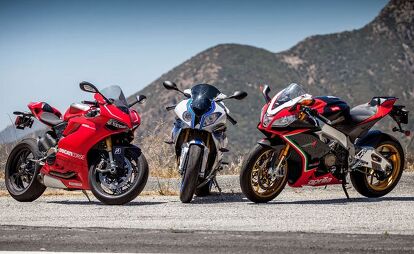















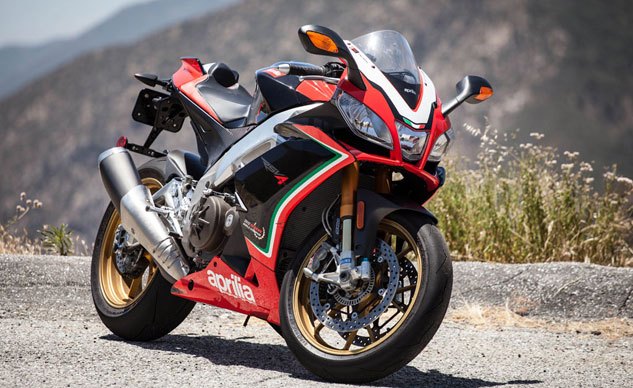
















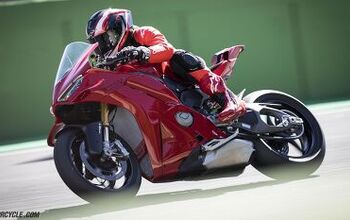
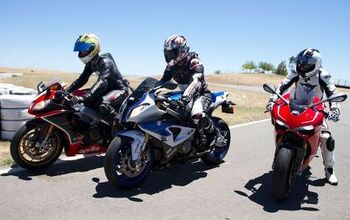


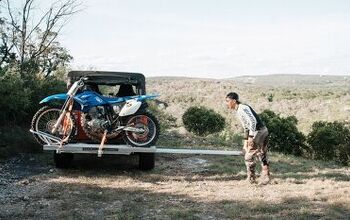


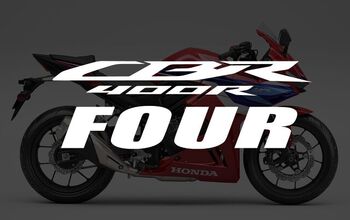
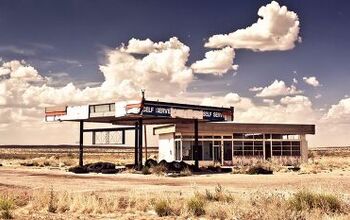
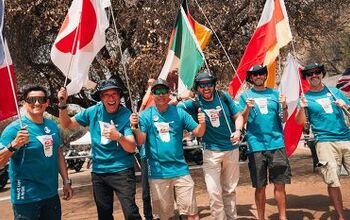
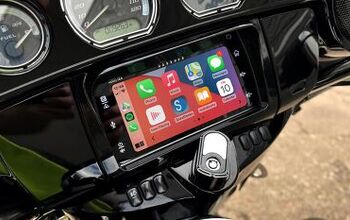
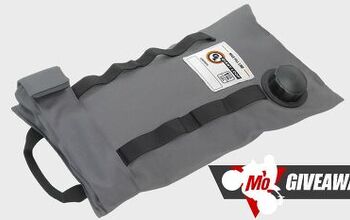

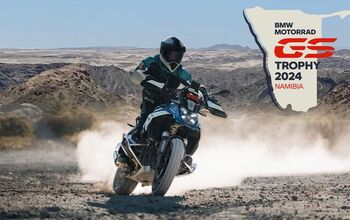


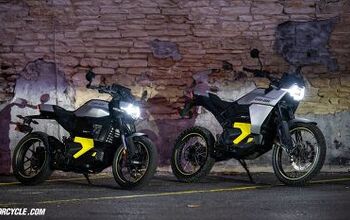
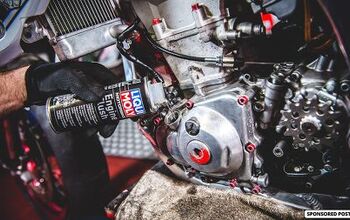
Comments
Join the conversation
Annnnd that's a beautiful summary of why old Ducati guys like myself don't like new Ducatis or the people who buy them. That and Justin Bieber.
"How do you value cool factor? Just ask my brother-in-law who couldn’t give two sh*ts about the one-inch chicken strips on the back tire of his Duc. As long as the bright red paint and Termignonis turn heads his way, he’s satisfied."
The Duc puts out a crazy amount of power, and not just "for a twin". It is a crazy amount of power, period. The fact that it comes from a 2 cylinder engine blows my mind. This idly demented mind wants to know what a similarly fully unleashed BMW puts out.
Disappointing to hear about the lower gear power reduction on the Ape. Recently Ivan's Performance hacked the ECU on my beloved '06 FZ1, removing it's lower the gear power restriction. Wheelies are cake now, as they should be on a liter class bike :)